AUTHOR

Maj


Maj
The Centre for Historical Analysis and Conflict Research is the British Army’s think tank and tasked with enhancing the conceptual component of its fighting power. The views expressed in this In Depth Briefing are those of the author, and not of the CHACR, Royal Military Academy Sandhurst, Ministry of Defence or the British Army. The aim of the briefing is to provide a neutral platform for external researchers and experts to offer their views on critical issues. This document cannot be reproduced or used in part or whole without the permission of the CHACR. www.chacr.org.uk
DESPITE the sizeable distraction of war in Ukraine, the gradient of the United Kingdom’s defence, security and foreign policy ‘tilt’ towards the Indo-Pacific – first announced in the Government’s 2021 Integrated Review –remains relatively steep. Indeed, speaking at a UK-France summit in Paris in early March, Prime Minister Rishi Sunak described security in Europe as being “intertwined” with peace in the Indo-Pacific and confirmed HMS Queen Elizabeth will be regularly deployed across the region to – alongside France’s Charles de Gaulle aircraft carrier – form the “backbone” of a permanent European maritime presence there.
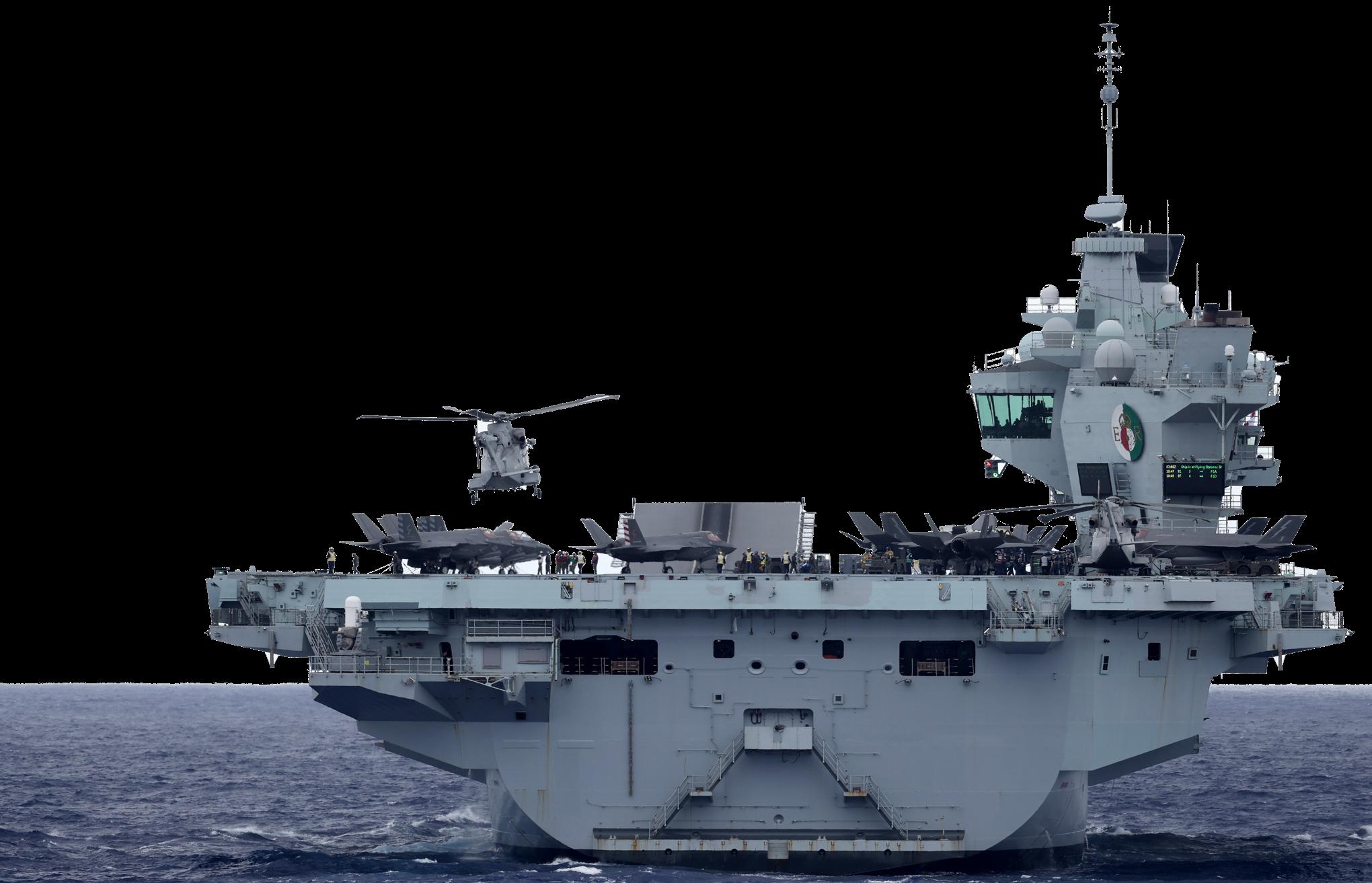

The waters and shores of South East Asia are not uncharted
territory for Britain’s military, however, its record in the region is far from exemplary – having been indelibly marked by the initial stages of the Second World War, which proved nothing short of disastrous. While the UK and its allies – notably the US – eventually prevailed, more than 80 years after the outbreak of war, several lessons should be re-examined as the nation continues to make its much-publicised tilt eastwards.
South East Asia’s 650 million people – spread across 11 nation states passing through
1Myanmar (Burma), Thailand, Laos, Cambodia, Vietnam, Malaysia, Singapore, Indonesia, Brunei, East Timor and the Philippines make up the nation-states of South East Asia with all but East Timor being full members of ASEAN – the Association of South East Asian Nations.

various degrees of economic development,1 some governed by Communist parties whereas three are majority Muslim societies – pose challenges for land forces in delivering their functions of security, peace support, warfighting and defence engagement at a time when diplomatic relations with China have soured. In addition, the sweep of security problems (ably captured by the mosaic of conflict)2 in the region – which include Islamic separatists in Thailand and the Philippines, piracy in the Strait of Malacca, and Myanmar’s complex volatility – point to a region not just dominated by China’s military expansion, but a myriad threats and problems affecting regional and global stability.
December 1941 heralded a strategic shift when 350 Japanese
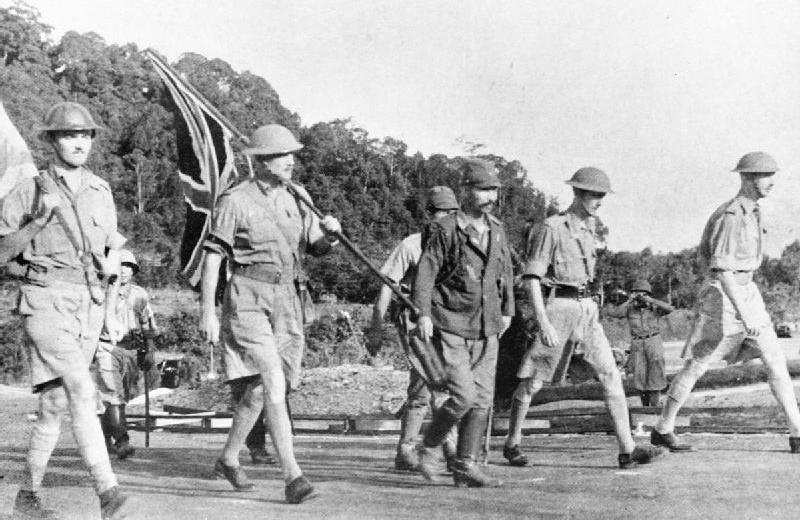
aircraft launched a pre-emptive strike on US Naval facilities in Hawaii’s Pearl Harbor. Within a few short hours the US lost 11 ships and 2,400 personnel and suffered a strategic shock that has only once been paralleled since with the 9/11 terrorist attacks in 2001. For the UK and its allies this moment heralded a chapter of defeat as Japanese troops from the 5th Division’s infantry regiments overcame resistance from Indian Army and local troops on the beaches at Kota Bahru in Malaya’s north-east.

Launching ambitious simultaneous attacks, Japan was to reshape the region’s identity forever. UK strategy and hubris was to be humiliated in a few short weeks when, on 15 February 1942, Singapore – the UK’s crucial Crown Colony –surrendered its 130,000 British and Allied troops. All three services (land, sea and air) were comprehensively humbled by a significantly smaller though better equipped, trained and motivated, Japanese force.
The shock of 1941/2 offers three modern lessons for UK defence in Asia. The first is that strategy really matters, shortcomings in pre-1941 UK defence planning assumptions and, an over-dependence on an underresourced maritime solution (and US help), contributed heavily to the defeat in Malaya. Secondly, a failure to integrate capabilities (what we would now consider as domains) fatally compounded
HOURS THE US LOST 11 SHIPS AND 2,400 PERSONNEL AND SUFFERED A STRATEGIC SHOCK THAT HAS ONLY ONCE BEEN PARALLELED SINCE WITH THE 9/11 TERRORIST ATTACKS IN 2001.”
weaknesses in the Allied defence. Thirdly, and perhaps of greatest significance, a poor understanding of the region’s geography, people and cultures led to hubris and catastrophic miscalculation.
2021 represented a moment of significant strategic reappraisal –one not seen since Denis Healey’s review of East of Suez policy. The latter saw the UK’s global presence significantly diminished, in turn paving the way for a trend of almost 50 years in subsequent foreign and defence policy that only really ended with Brexit.3
3Boillot, Jeanne BREXIT and the 2021 Integrated Review qmul.ac.uk/nexteuk/
strategic-autonomy.html accessed 15 Jun 21
4Heaslip, Matthew `Britain’s armed forces and amphibious operations in peace and war 1919–1939: A Gallipoli Curse?’, Journal of Strategic Studies, January 2019, (2019): .5.
5Farrell, Brian P. `Introduction’. In Farrell, Brian P; Hunter, Sandy (eds.). A Great Betrayal? The Fall of Singapore Revisited. (Singapore: Marshall Cavendish 2010)
6Principles of War Podcast (theprinciplesofwar.com) ‘Sir Max Hastings and Lessons Learned from Vietnam’ 20 Mar 2021.
7To illustrate the cost, of the 2nd Bn Argyll and Sutherland Highlanders personnel who served during the campaign, 220 died of wounds or were killed in fighting, whilst a similar number (203) died in Japanese captivity of wounds, mistreatment or extrajudicial execution. Moon Over Malaya Moffat, J & McCormick Holmes, A (London, Tempus, 2014).
The 1942 capitulation of Singapore has roots in theories arising from World War I and the ill-fated 1915 Gallipoli campaign (under Churchill as First Lord of the Admiralty). These embedded a notion that seaborne landings were near impossible against wellorganised, prepared defences.4 Allied failure at Gallipoli engendered a complacency that would extend to Singapore and Malaya. As early as 1921, the belief existed that the colony’s vulnerability could be resolved by sea power almost alone. The 1921 Singapore Strategy5 concluded that sea-borne reinforcements would be sufficient to protect this valuable colony in the event of attack. A single service focus on defence of the Crown Colony and Malay states was perhaps the fundamental weakness in a strategic failure, and of note the current UK’s tilt appears similarly dependent on maritime power; is there a danger of
history repeating itself in resolving tensions in the South China Sea through naval power alone? Whilst land forces meet commitments of closer threats (in MENA [Middle East/North Africa], the Baltic States and the Ukraine) there exist challenges facing the British Army when it comes to delivering effect against what is a very different array of threats significantly further afield than current operations demand.
A key aspect of the 1942 Allied military upset was the sheer disparity in numbers. Japan’s victorious 25th Army, under General Yamashita, who captured the Malay Peninsula and Singapore, possessed less than 30,000 ground troops, whereas the defeated Allied forces (some based in the colony for more than two years) numbered more than 130,000. One observation here is that superior-sized land forces can present an advantage, but only when they are properly trained, equipped, led, and of course, prepared. Failure to embrace (and properly resource) an effective land-based strategy proved fatal to the Allies.
Max Hastings6 makes a point about the surrender of British troops during the campaign, arguing that, “if those British troops had known what the Japanese would have done to them in captivity, they would have fought a damn sight harder”. 130,000 troops were marched into what would become one of the more widely documented war crimes against Allied personnel.7 This is not the place to discuss the ins and outs of Singapore’s defence, but the numerous accounts cite failures by Malaya Command (who oversaw the defence of Singapore and the Malay Peninsula) to understand and act on information about the campaign, the enemy’s conduct
“WITHIN A FEW SHORTPicture: Ryan Parker/unsplash publications/blog/items/brexit-and-the-2021-uk-integrated-review-what-effects-on-european-
and the real picture throughout the short campaign.
From leadership right down to the moral component of its fighting power, the Imperial Japanese Army outclassed the British, Indian and Commonwealth forces.8 The performance of the Japanese, though significantly outnumbered by the defending troops, offers lessons that small forces can overcome a larger opponent.9 A force of less than 30,000 Imperial Japanese troops (on the ground) demonstrated just how much a multiplier training, preparation, equipment and morale can be. Any strategic shift (or tilt) to Asia generates a need to understand the various adversaries and threats as well as the capabilities that the region demands.
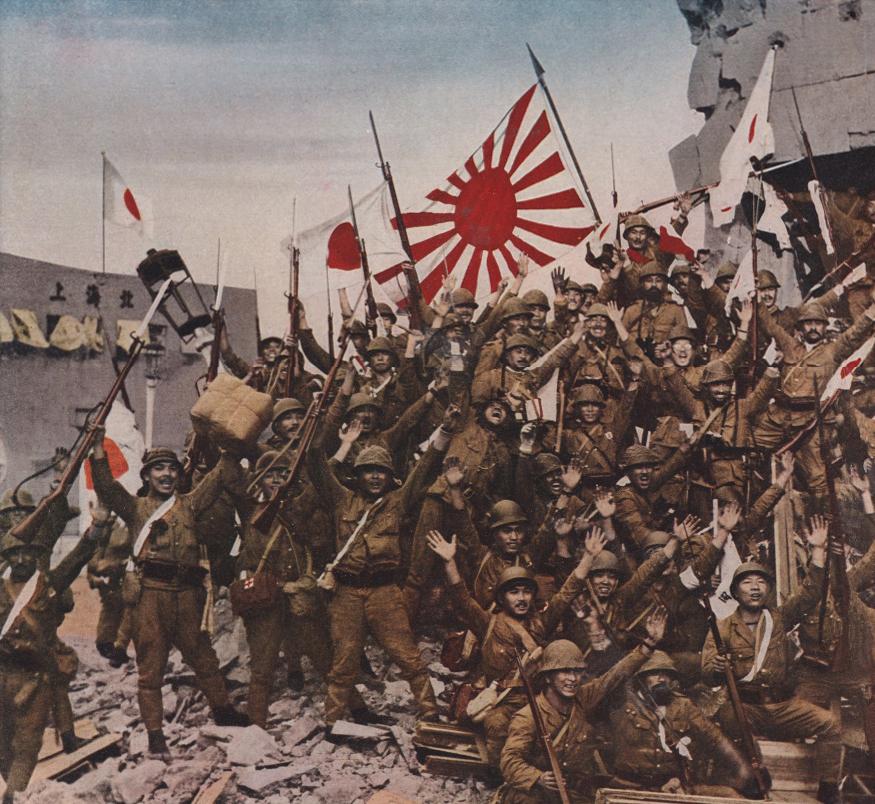
Japan’s tactics, techniques and procedures had rapidly evolved in the China campaign launched a decade before the Pacific war. The invasion providing a testing ground for new weapons and tactics (including biological weapons). As the Germans and Italians exploited in the Spanish Civil War10 (1936-9), rapid military innovation offered wide benefits from the campaigns in the subsequent world war, something the Allies did not exploit well. Interestingly, Lt Col Stewart, commanding officer of 2nd Battalion, Argyll and Sutherland Highlanders in the 1941/2 campaign, had witnessed Japanese naval landing forces in action in Shanghai in 1937 and, I would argue, thus been afforded a foresight of things to come. Unfortunately, Stewart’s Argylls remained almost alone among Allied troops in developing a robust, mobile jungle fighting capability prior to the invasion.11 Malaya Command was seemingly content to rely on naval power and a sizeable Indian Army presence in lieu of a distinct landbased strategy which was rapidly overcome by the Japanese.
The importance of naval power as a key defensive capability has a long-established presence in British military strategy (ever conscious of the homeland’s island status). In the case of Malaya and Singapore, a commitment to deploy naval forces within 70 days back in the 1930s was fundamental to Malaya Command’s defence.12 Critically, this was allowed to lapse as the war in Europe and the Middle East escalated. According to various sources, German intelligence relayed this vital change of posture to Japanese military planners prior to their attacks on Malaya. This strategic change, driven by the immediate defence needs of the UK itself, directly undermined the Singapore strategy. In addition to the latter’s inadequacy, one of the biggest failings by Allied defenders lay in their inability to stay abreast of the changes in their enemy, the UK’s allies and the respective centres of gravity.13 The terrain, civil society and local issues were consistently left underexploited
by the defenders, both prior to and during the campaign. The Japanese had spent the years before their invasion discretely mapping out possible routes, potential collaborators and vulnerabilities that gave them an edge during the invasion.14 Sadly those charged with planning Singapore’s Allied defence appeared not to have been so proactive, instead resting on the laurels of the island’s much vaunted impregnability and a maritime-focused strategy that was to be suddenly unpicked as war broke out in Europe.
The UK’s unexpected sudden defeat was not just a failure on the part of the three services but highlights the importance of successfully bringing the available capabilities together (what is now known as integrated action).15 South East Asia as a theatre demands much more than a single domain. In 1945, Japan’s defeat was finally achieved by what we would now call multi-domain
integration (the pulling of components together). The Allies drew on (mainly US) naval, air and land capabilities in recovering captured territories in a methodical manner (sometimes island-hopping) over huge distances, this often accompanied by fierce land battles.16 It is therefore almost inevitable that the land domain would play a role even in a potentially littoral deployment. Contemporary NATO doctrine (AJP 3-2)17 states “amphibious forces, when established ashore, are normally assigned to the land component commander”.
After swift victories in the air and against naval forces,18 Japan’s forces overcame Allied
8Liddell Hart, B History of the Second World War (New York, Konecky and Konecky, 2015): 163
9Thompson, P The Battle for Singapore (London, Hachette, 2005): 5
10Payne, Stanley, Spanish Civil War (Columbia, Columbia University Press) 2012: 235
11As a result of sound preparation, 2A&SH were committed early on in the campaign and fought many engagements right through to the fall of Singapore see Moon over Malaya for a detailed account.
12Thompson, P, The Battle for Singapore 2005:48
13Podcast Principles of War (episode 2) March 2018
14Malayan bicycle dealers and photography shops were subsequently found to be Japanese owned, and in many cases had built up an impressive understanding of (human) terrain and supply routes. The imaginative use of bicycles is often cited as a key component of the IJA’s mobility.
15ADP Land Operations defines Integrated Action as `the application of the full range of lethal and non-lethal capabilities to change and maintain the understanding and behaviour of audiences to achieve a successful outcome. It is a unifying doctrine which guides the orchestration and execution of operations’
16Iwo Jima and Burma are often cited as examples of overcoming Japanese grounds forces in 1945, but less known is the very costly liberation of the Philippines by the US 6th and 8th Armies.
17NATO AJP 3-2 Allied Joint Doctrine For Land Operations (March 2016)
“FROM LEADERSHIP RIGHT DOWN TO THE MORAL COMPONENT OF ITS FIGHTING POWER, THE IMPERIAL JAPANESE ARMY OUTCLASSED THE BRITISH, INDIAN AND COMMONWEALTH FORCES.”
land forces at almost every turn. Integration among Allied components was poor with Japan’s relatively unimpeded use of the Malay coast to bypass stubborn land defences indicating that not only was the strategy fundamentally at fault, but also interaction of the components worsened an inadequate strategy.19
Only with success in Burma, in the latter stages of the war, was the UK’s reputation partly restored in South East Asia. But the parallels for the West, having to face a rapidly expanding power in 1941 that was little understood in terms of culture, capability and intellect has obvious counterparts in today’s world. The Integrated Review of 2021 provided some approach in responding to rapid changes, tensions and strategic shift in the region, especially around Taiwan and other disputes: “As we engage more in the Indo-Pacific, for example, we will adapt to the regional balance of power and respect the interests of others”.20
The UK’s role in South East
Asia did not end in 1957 with independence for the Malay colonies. As students of Joint Services Command and Staff College will attest, Britain’s Forces generally circumvented Vietnam while still delivering success during the Malayan Emergency as well as the 1964 Confrontation with Indonesia, and even today, there remains a visible presence in Brunei.
As the HMS Queen Elizabeth embarks on voyages encompassing former colonies, rising powers and complex regional disputes, it is worth revisiting exactly what this defeat in Singapore meant for the UK and its relationship with the region. Lying 7,000 miles from the UK, even further by sea lanes, projecting a presence of any form is a challenge there, where distances can be vast. The South China Sea may be comparable in size to the Mediterranean, but in the Pacific distances remain hard to put into perspective in British imaginations.
Land forces appear (according to official publications and the AUKUS initiative) to play a limited role in this new engagement. However, as Singapore’s fall in 1942 showed,
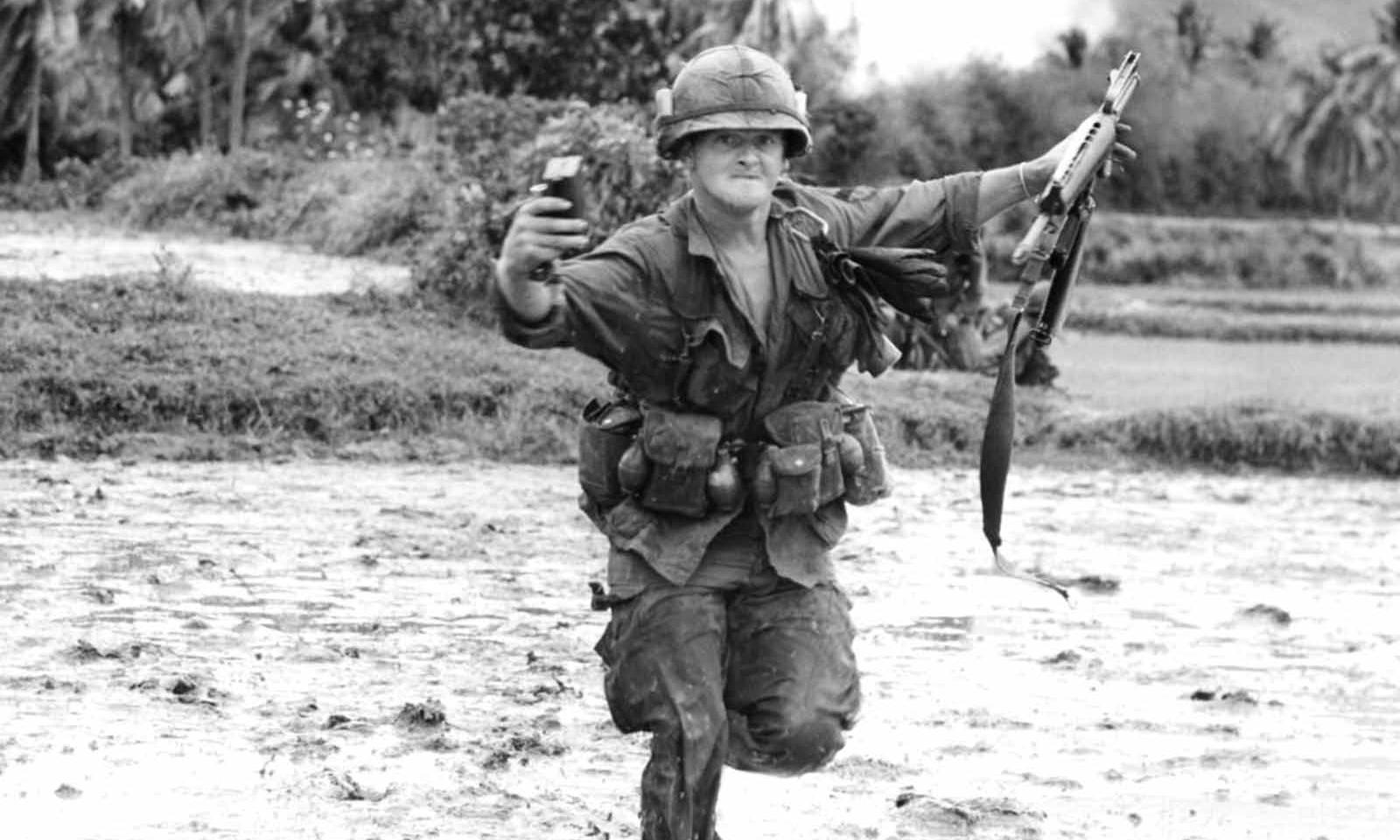
over-dependence on naval power and the effects of limited air and land capability was a key reason why Singapore fell so rapidly. In any dispute in the region, it cannot simply be assumed that a single contingent domain will suffice.
New observer status in the Association of South East Asian Nations, significant progress in the UK’s accession to the Comprehensive and Progressive Agreement for Trans-Pacific Partnership, in addition to existing structures (such as the Five Eyes and Five Powers Defence Arrangement21) are evidence of a significant UK presence, underpinned by the Commonwealth and US ties. However, Asia has systematically rejected colonialism in the post war period. Whether we consider the French in Indochina, the British in India or the Dutch withdrawal from the East Indies (Indonesia), roles have fundamentally changed. In the case of Vietnam and Indonesia, a fierce nationalist narrative has emerged, and even in Singapore, a hard-headed appreciation of the UK’s wartime failure is evident.22
Importantly, issues of basing and alliances call for a thorough understanding of how audiences in South East Asia are both composed and likely to respond. The UK’s political and economic tilt to the region, although not inevitable, is perhaps more a reflection of global markets, demographics and an abundance of important resources.23 Whilst this makes a compelling argument, it is also a simplistic one when looked at in the context of PMESII24 [Political, Military, Economic, Social, Information, Infrastructure] or other tools for analysis. It is nevertheless worth drawing on the Integrated Operating Concept in identifying the UK’s strategy. In this context the deployment of the HMS Queen Elizabeth is clear in a maritime role, but appreciating the input of the other four operational domains (space, cyber, air and
18The Royal Navy’s Force Z (HMS Prince of Wales and HMS Repulse and other ships) though believed more than a match for the Japanese, were sunk in minutes by Japanese warplanes with the loss of more than 800 personnel 72 hours after the invasion was launched, this virtually ended the RN role in the defence of Malaya, and a lack of aircover made the ships particularly vulnerable to attack.
19From the outset the Royal Navy were not integrated into Malaya Command, the relationship between the Army and Royal Air Force was also problematic. Thompson, P Battle for Singapore: 56.
20MOD The Integrated Review March (UK Ministry of Defence, 2021): 14.
21FPDA was created in 1971 to bring together the UK, NZ, Australia, Malaysia and Singapore. It coordinates a regional intergovernmental security arrangement at Ministerial level and possesses a 2* HQ in Northern Malaysia staffed by personnel from the 5 member states.
22Singapore’s state-run museum (the old Ford factory) addressing the occupation of the colony in WW2 vividly depicts not only its fall and repression under the IJA, but also significant shortcomings in UK preparations for liberation and government in 1945.
23The Economist ‘The Rivalry between America and China will hinge on South East Asia’ 27 Feb 2021
24Political, Military, Economic, Social & Intelligence are among the possible combinations of analysis, space precludes discussing my own personal findings.
“AS THE US IN VIETNAM EXPERIENCED, A POWERFUL MILITARY CAPABILITY ALONE DOES NOT EQUATE TO SUCCESS.”Picture: CC BY 2.0
land) remains hard to grasp, in the case of the land domain as the 1942 defeat demonstrated: “Effective integration of maritime, land, air, space and cyber... adds up to far more than simply the sum of the parts – recognising that the overall effect is only as powerful as the strength of the weakest domain”25
As the US in Vietnam experienced, a powerful military capability alone does not equate to success. Strategy is crucial, but also as Hastings argued, “American decision makers failed to recognise the economic and cultural impact of a huge foreign army upon an Asian peasant society…”.26 Nowadays, Hastings’ description of peasant societies has been supplanted by fast-growing urban populations often influenced by technologically savvy young leaders.27 Audiences can be reached relatively quickly, but many remain sceptical of
25MOD,Introducing the Integrated Operating Concept Introducing the Integrated Operating Concept (publishing.service.gov.uk) accessed 01 May 2021: 10
26Hastings, M, Vietnam: An Epic Tragedy, 1945-75. (London, William Collins, 2018): 641
27Thailand and Myanmar have large youthled protest movements, in Malaysia a youthbased party focussed on voting reform has emerged and in a region where demographics are skewed towards youth this is represents a shift away from older established politicians.
28asia.nikkei.com/Editor-s-Picks/TeaLeaves/Developing-Asia-can-do-withoutWestern-influencers – Nikkei Asian Review
25 Aug 2021
29Whilst Vietnam is an obvious example, Indonesia repeats messages of liberation every August referencing its declaration of independence from Dutch rule (1945) with the issue overshadowing Netherlands royal visits and state functions. King WillemAlexander, please recognize Indonesia’s Independence Day - Opinion - The Jakarta Post 10 March 2020
30Churchill, H The Hinge of Fate, (London: Cassell, 1951): 43.
31General Nick Carter BBC Radio Four 8 Jun 2021 “Small Island or Global Britain”.
32MOD Introducing the Integrated Operating Concept (UK Ministry of Defence (2020): 10
Western influences.28 In certain nation-states governments still invoke powerful narratives of anti-western or post-colonial messages,29 occasionally allowing these to overshadow relations with European states. More recently, the abrupt withdrawal of the West’s presence from Afghanistan, that most landlocked of theatres, highlights the challenges of promoting the former’s military prowess. While Afghanistan is nothing like the defeat in Singapore, the South China Sea and South East Asia pose challenges that the land domain must confront, rather than relying, as Britain did in 1942, on the maritime domain alone.
Winston Churchill was not understating when he described Singapore’s fall as “the worst disaster and largest capitulation in British history”.30 East of Suez, the UK’s defeat in Singapore has not been forgotten. Regardless of UK policy, South East Asia and the Indo-Pacific have become the focus of global attention, partly driven by economics and demography, but also by Beijing’s increasingly assertive (some would say aggressive) posture. 2021 marked the centenary of the Singapore Strategy, but also
the formation of the Chinese Communist party, only one of which has endured.
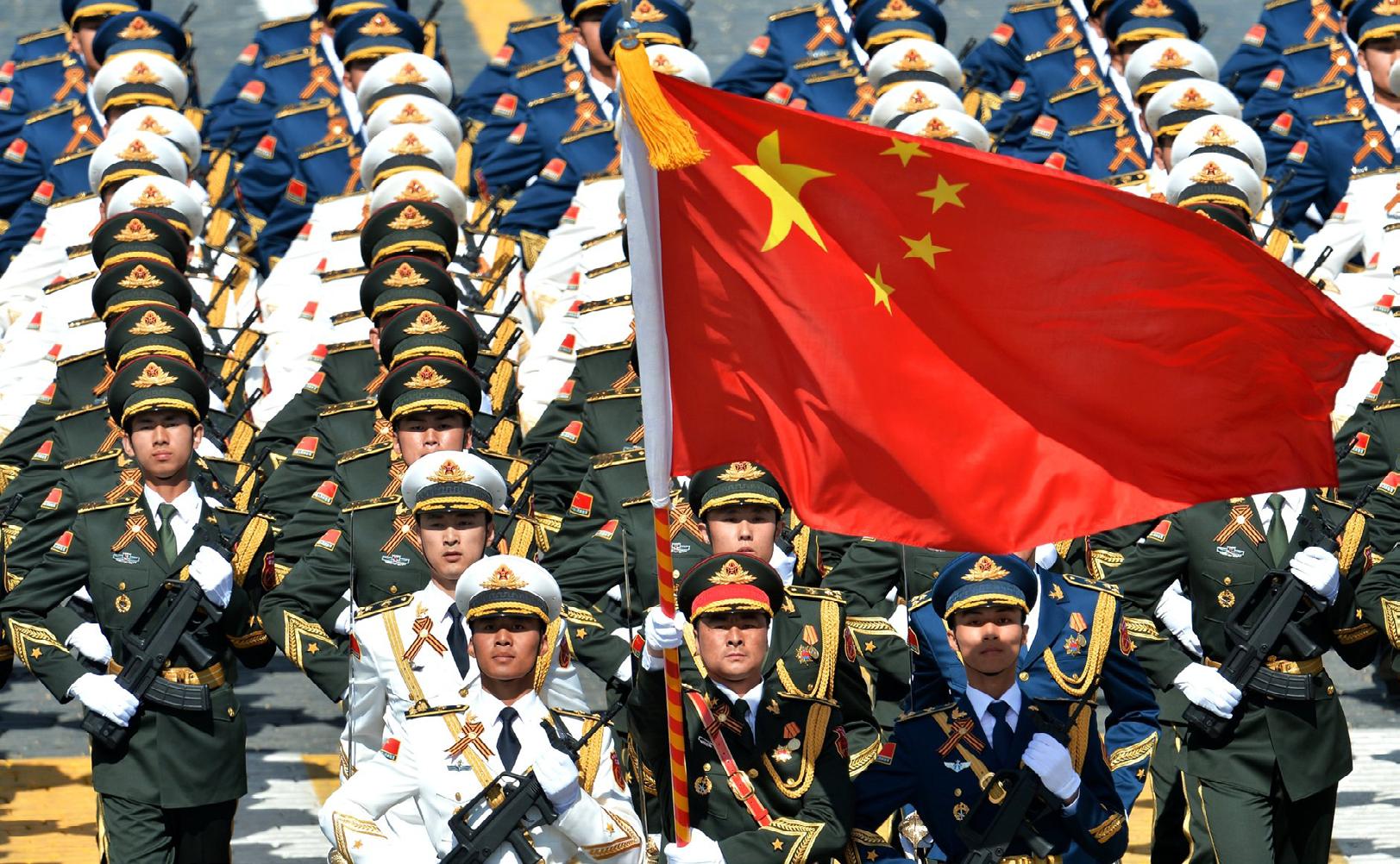
The despatch of the UK-led Carrier Strike Group in 2021 was a clear symbol of renewed maritime capability, and with US and Dutch assets in support, reflected our changed world. As former Chief of Defence Staff General Nick Carter stated: “We have to be realistic, we will achieve our effect by being with allies.”31 The Integrated Review of 2021 was a timely reminder that the world continues to change, and deliverable strategy must reflect this. In 1941, strategy failed to reflect changes in Japan’s capabilities and that of the UK’s circumstances. China’s inexorable rise demands a dynamic strategy that the UK has not always been known for. Second, comprehensive defeat in 1942 reflected a failure to integrate capabilities (and domains). Operating in South East Asia and the South China Sea requires all operational domains to be integrated in the face of unprecedented threats and risks. Thirdly, and perhaps of most relevance to the land domain, understanding the region’s geography, people, and cultures are critical to the success of the UK’s renewed presence.
As the Integrated Operating Concept argues, integrating the domains is just the start, it demands more international engagement, an assertive posture and a continuous pursuit of information advantage (asking commanders to consider effects, particularly on local populations).32 Audiences were poorly understood and an afterthought in 1941; today they are fundamental to how the UK and its allies will deliver success. Finally, the land component, and the Army in particular, have only a limited presence in the region. Brunei’s garrison signifies a low-key success in its own right, but to deliver capability, understanding and effect in South East Asia there are significant questions about basing, education, training, equipment and posture. With operations and commitments elsewhere, little capacity exists to generate activity and solutions to the questions raised. The land component’s presence appears more of an aspiration and raises more questions than answers. How this will be delivered and resourced remains unclear, but, like Japan’s expansion in the 1930s, the region (and China) is likely to demand a solution faster than many in the British Army feel comfortable with.